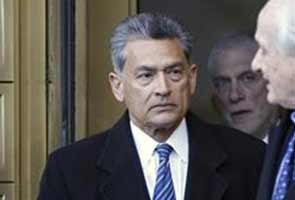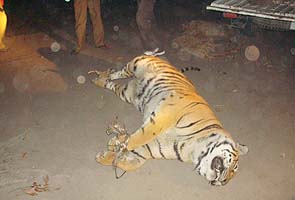27 may 2012
Paris: Astronomers are gearing for one the rarest events in the Solar System: an alignment of Earth, Venus and the Sun that will not be seen for another 105 years.
The celestial ballet known as the Transit of Venus is one of the most eagerly-awaited events in skywatching, an episode that has advanced the frontiers of knowledge, sometimes with dramatic consequences.
"For centuries, the Transit of Venus has been one of the great moments for astronomers," said Claude Catala, head of the Paris Observatory. "2012 will not be an exception to the rule. It is a one-off opportunity."
"It's now or never," the British magazine Physics World told its readers.
"It will be an event well worth watching, as the next Transit of Venus will not occur until December 2117, when most of us will be long gone."
In a transit, Venus passes between Earth and the Sun, appearing through the telescope as a tiny black spot that, for some six and a half hours, crawls in a line over the fiery face of the Sun.
On the evening of June 5, North America, Central America and the northern part of South America will get to see the start of the transit -- clear skies permitting -- until those regions go into sunset.
All of the transit will be visible in East Asia and the Western Pacific.
Europe, the Middle East and South Asia will get to see the end stages of the eclipse as they go into sunrise on June 6.
But West and Southwest Africa, and most of South America, will not get a view, although people there can catch the event on a webcast.
Only six Transits of Venus have ever been recorded -- quite simply because before the phenomenon was predicted by the 17th-century German mathematician Johannes Kepler, no-one knew where to look or had the lenses to do so.
Transits occur in truly weird combinations, either in a June or a December. When one happens, another one happens in the same month eight years later.
Then there is a wait.
A very long wait.
A pair of December transits follows a June pair after 105 years, while a June pair comes 121 and a half years after a December pair.
For example, there was a transit in December 1882; the next one was in June 2004, which will be followed this year on June 5-6, depending on the dateline; astronomers will then have to be patient until December 2117, which will be followed by another transit in December 2125.
In the 18th century, scientists realised that by timing the event from different locations, the transits of 1761 and 1769 could be triangulated and give the distance between Earth and the Sun -- "the noblest problem in astronomy," for it would at last place mankind in the cosmos.
Britain and France, the two superpowers at the time, jockeyed for the glory, dispatching missions to far-flung places.
Among them were British surveyors Charles Mason and Jeremiah Dixon, who were attacked by French warships just after they left Plymouth and headed back to port.
Discouraged, they wanted to cancel the trip -- but ventured back out to sea after a receiving a now-legendary letter from the Royal Society, the British scientific academy which was sponsoring them.
To give up would "bring an indelible Scandal upon their Character, and probably end in their utter Ruin," the letter said stonily.
Drama was also in store for the 1769 transit, when Britain sent James Cook to Tahiti to view the event from there.
After his mission, Cook opened the instructions for the secret -- and most important -- part of his expedition: to search for and map for the Crown a mysterious "southern continent," which turned out to be New Zealand and eastern Australia.
For astronomers today, the Transit of Venus offers a chance to gain insights into the planet's notoriously thick, cloudy atmosphere, and use the refraction of sunlight to finetune techniques for hunting planets orbiting distant stars.
One of the most useful exercises will be to compare observations of the transit made by Earth-based telescopes, orbitaltelescopes and robot probes, including Europe's Venus Express.
"This way we get different measurements with which to calibrate our methods for analysing exoplanets orbiting other stars," said Thomas Widemann, of the Laboration of Space Studies and Astrophysics Instrumentation, or LESIA, in Paris.
Astronomers seize last chance in lifetime for Venus Transit
Paris: Astronomers are gearing for one the rarest events in the Solar System: an alignment of Earth, Venus and the Sun that will not be seen for another 105 years.
The celestial ballet known as the Transit of Venus is one of the most eagerly-awaited events in skywatching, an episode that has advanced the frontiers of knowledge, sometimes with dramatic consequences.
"For centuries, the Transit of Venus has been one of the great moments for astronomers," said Claude Catala, head of the Paris Observatory. "2012 will not be an exception to the rule. It is a one-off opportunity."
"It will be an event well worth watching, as the next Transit of Venus will not occur until December 2117, when most of us will be long gone."
In a transit, Venus passes between Earth and the Sun, appearing through the telescope as a tiny black spot that, for some six and a half hours, crawls in a line over the fiery face of the Sun.
On the evening of June 5, North America, Central America and the northern part of South America will get to see the start of the transit -- clear skies permitting -- until those regions go into sunset.
All of the transit will be visible in East Asia and the Western Pacific.
Europe, the Middle East and South Asia will get to see the end stages of the eclipse as they go into sunrise on June 6.
But West and Southwest Africa, and most of South America, will not get a view, although people there can catch the event on a webcast.
Only six Transits of Venus have ever been recorded -- quite simply because before the phenomenon was predicted by the 17th-century German mathematician Johannes Kepler, no-one knew where to look or had the lenses to do so.
Transits occur in truly weird combinations, either in a June or a December. When one happens, another one happens in the same month eight years later.
Then there is a wait.
A very long wait.
A pair of December transits follows a June pair after 105 years, while a June pair comes 121 and a half years after a December pair.
For example, there was a transit in December 1882; the next one was in June 2004, which will be followed this year on June 5-6, depending on the dateline; astronomers will then have to be patient until December 2117, which will be followed by another transit in December 2125.
In the 18th century, scientists realised that by timing the event from different locations, the transits of 1761 and 1769 could be triangulated and give the distance between Earth and the Sun -- "the noblest problem in astronomy," for it would at last place mankind in the cosmos.
Britain and France, the two superpowers at the time, jockeyed for the glory, dispatching missions to far-flung places.
Among them were British surveyors Charles Mason and Jeremiah Dixon, who were attacked by French warships just after they left Plymouth and headed back to port.
Discouraged, they wanted to cancel the trip -- but ventured back out to sea after a receiving a now-legendary letter from the Royal Society, the British scientific academy which was sponsoring them.
To give up would "bring an indelible Scandal upon their Character, and probably end in their utter Ruin," the letter said stonily.
Drama was also in store for the 1769 transit, when Britain sent James Cook to Tahiti to view the event from there.
After his mission, Cook opened the instructions for the secret -- and most important -- part of his expedition: to search for and map for the Crown a mysterious "southern continent," which turned out to be New Zealand and eastern Australia.
For astronomers today, the Transit of Venus offers a chance to gain insights into the planet's notoriously thick, cloudy atmosphere, and use the refraction of sunlight to finetune techniques for hunting planets orbiting distant stars.
One of the most useful exercises will be to compare observations of the transit made by Earth-based telescopes, orbitaltelescopes and robot probes, including Europe's Venus Express.
"This way we get different measurements with which to calibrate our methods for analysing exoplanets orbiting other stars," said Thomas Widemann, of the Laboration of Space Studies and Astrophysics Instrumentation, or LESIA, in Paris.





